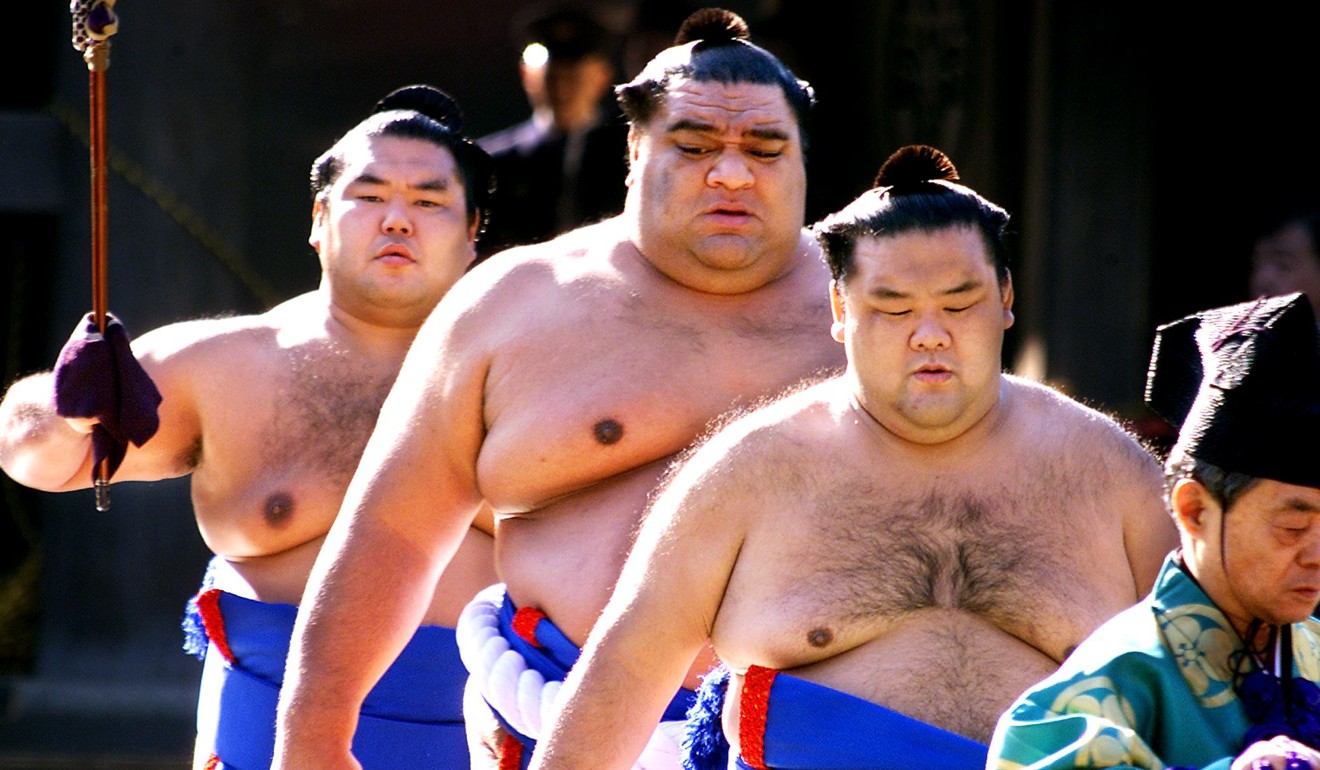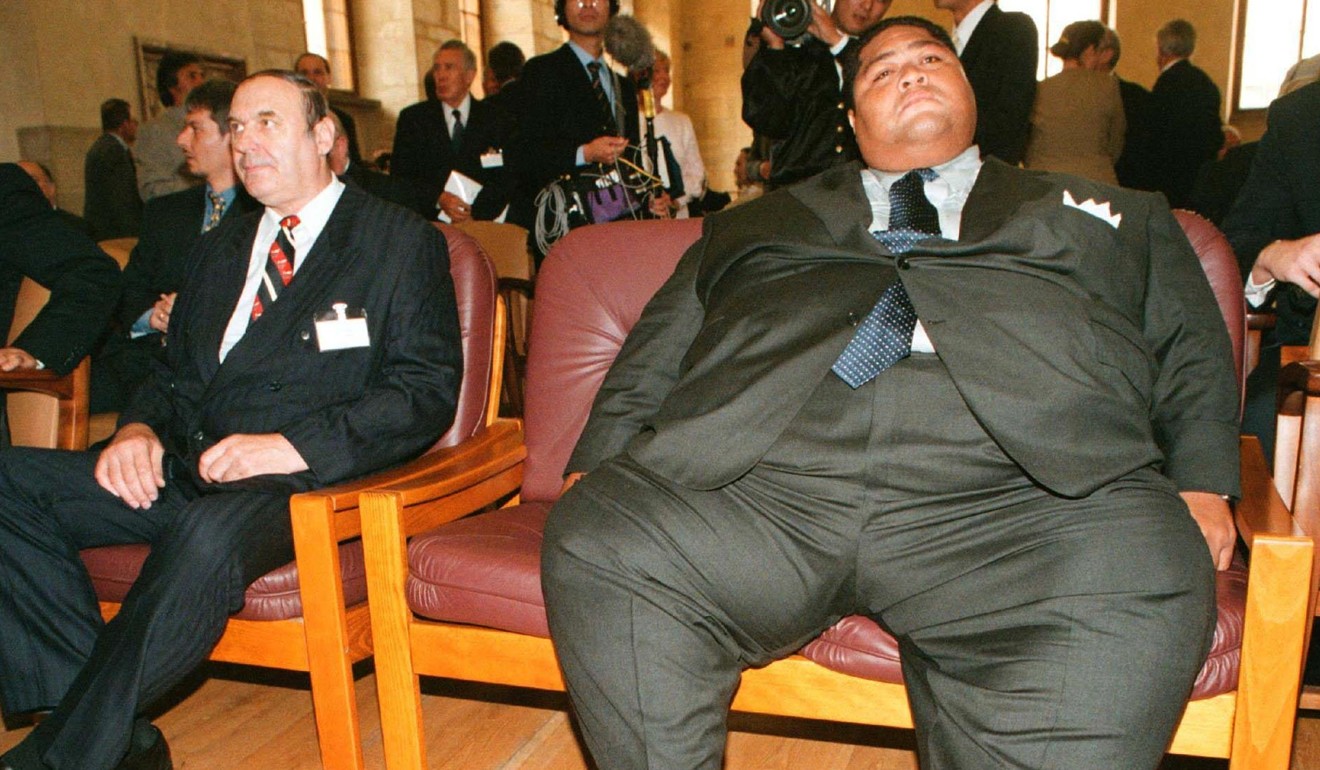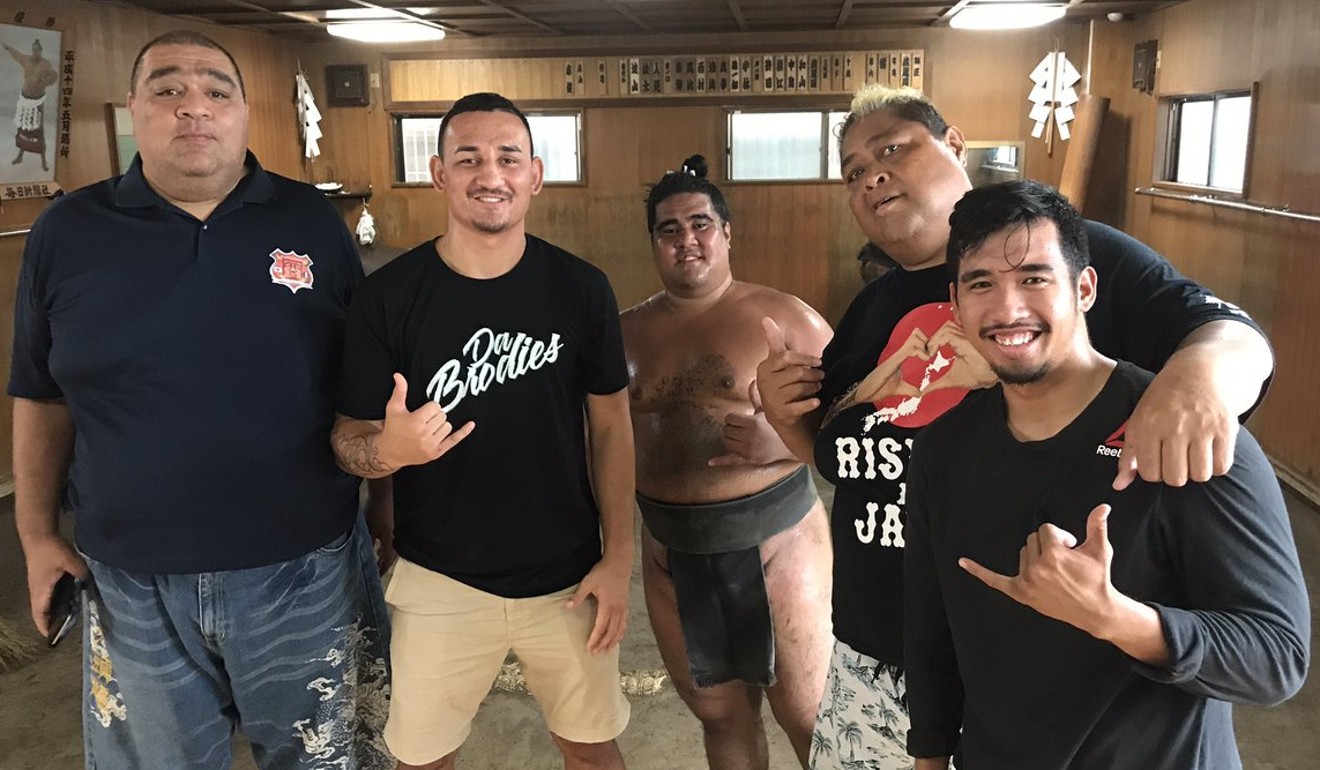
Screaming young female fans show ancient sport of sumo can still fight off MMA in Japan
The sport’s popularity waxes and wanes but is on an upswing now as new stars keep emerging
Cynicism. It’s hard to reconfigure the modern sport follower’s factory setting. But sometimes the chance comes to shift it just a little.
A little after lunch time last weekend outside Tokyo’s Ryogoku Kokugikan people of all ages were standing in wait. Fathers were holding their sons, pointing and whispering into their ears when the cars rolled up and the huge shapes emerged into view.
The last day of the 2017 Autumn Grand Sumo Tournament might have been robbed of a number of its superstars – three of the sport’s four yokozuna (sumo’s highest rank) pulled out of the 15-day event before it even started – but no matter.
Japan still clings to its sumo heroes as it has for around 2,000 years, and a rare chance to take in the action presented sport in one of its purest forms.

The day before, at the Saitama Super Arena just outside the capital, the Ultimate Fighting Championship (UFC), which is the entirely modern version of combat sport, rolled into town with all its bells and whistles, but the two worlds collided as two sumo greats passed by the Octagon on the way to their seats.
Musashimaru Koyoō and Konishiki Yasokichi have captured all the sport offers during their illustrious careers and the crowd gathered for UFC stopped, stared.
Their fame remains universal. The two giants oin August met UFC world featherweight champion Max Holloway – who shares Hawaiian heritage with the pair – and by all reports one of the most fearsome fighters on the planet had at times looked on in awe as the pair chowed down over lunch together. They are simply larger than life itself.
Musashimaru boasts 700-odd victories while Konishiki is stillone of the most loved wrestlers in history, a man who never quite made it to the top but soldiered on until his massive frame (287kg at its peak) could take no more punishment.
Back inside the Ryogoku Kokugikan, the final afternoon of the autumn tournament features 32 bouts split into juryo (intermediate) and then the makuuchi (senior) divisions and you can safely smuggle in a picnic of sushi and fried Hokkaido chicken and sip sake to your heart’s content.
Sumo seems to an outsider to haveshaken off the stigma of bout-fixing suspicions and a perceived lack of respect for the sport shown by an increasing number of foreigners in its ranks that have captured unwanted international headlines over the past decade.
You might have thought, though, that this ancient sport had come under threat from the likes of MMA and the entertainment options now available right there in the palm of your hand.
Mark Schilling is a sumo expert, an interloper in some respects seeing as he was born in Zanesville, Ohio (population 25,000) but he has made Tokyo his home since 1975 and soon fell under the sport’s spell.
He writes about Japanese cinema but also works the sumo beat for broadcaster NHK, and in 1994 released “Sumo: A Fan’s Guide”.
“Sumo’s popularity waxes and wanes,” he says. “It’s on the upswing now mainly because of up-and-coming younger wrestlers that have become favourites of the fans, including women.
“One fairly reliable barometer of sumo’s popularity in the wider culture is the number of young female fans – and that number is rising now.”

As long as the stars keep emerging, the likes of MMA are of little concern and among those favourites is 21-year-old Onosho, who is greeted when he enters the dohyo by young ladies squealing and holding up signs bearing his name.
The last scheduled clash of the tournament sees the last yokozuna standing in Mongolian-born Harumafuji needing victory against the upstart ozeki (second level) Goeido to level their record for the event at 11-4 and force a rare play-off.
Harumafuji brushes off Goeido’s attempt to unbalance him and sends his foe out of the dohyo – and we’re going to a decider.
There’s pomp, and ceremony, and the pair stare each other down before Harumafuji – a force of nature at this stage – monsters Goeido out of the way.
The sport, as Schilling says, has “depths within depths”.
And that’s why, for more than 2,000 years, the people have kept coming back.


